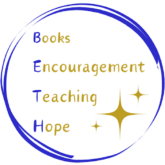Juxtaposition. A satisfyingly long word. In its simplest sense, it means placing something next to something else. In film, it is particularly “the contiguous positioning of either two images, characters, objects, or two scenes in sequence, in order to compare and contrast them, or establish a relationship between them; see also sequence, symmetry, and composition.” That definition is quoted from the AMC Filmsite’s Film Terms glossary. Juxtaposition is an excellent tool for writers as well, to highlight similarities or differences in character, setting, or action. As in film, two disparate characters in juxtaposition can bring depth to the writing, and can draw the reader further into the story. Today, I’m placing two similar blogposts in juxtaposition. Yesterday I told you about books written by Canadian author Beverley Brenna, today I have interviewed Bev specifically about these books and about Asperger’s Syndrome which informs and challenges the main character’s life in both books. This is, again, by request of my friend Pat Tilton, whose blog Children’s Books Heal, continually brings to the forefront of our consciousness an awareness of kids with special needs. For Autism Awareness Month in the U.S., then, I am juxtaposing the book recommendations yesterday and the interview today. (Again, I apologize that this post is longer than the suggested standard for an A to Z post. I believe you’ll find it well worth the extra time it takes to read.)
